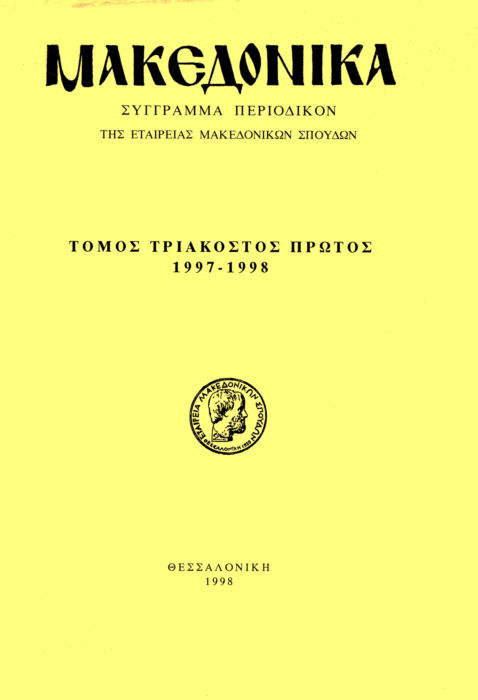The linguistic idioms of the nome of Kozani as northern and their principal peculiarities
Abstract
It is noted initially that the present linguistic idioms of the main urban centres, as well as those of many villages in the nome of Kozani, whose population does not result from the recent displacement populations, form part of the so-called northern neohellenic idioms. These have two main phonetic characteristic points: 1) the change of the atonic e (e, at) in i and ο (ο, ω) in ου. It is a law which is strictly applied ceaselessly since approximately the 3 C. until today, and 2) the discarding of the atonic i (ι, η, υ, ει, οι) and ου. Here the law is not strict. Sometimes the discarding can be avoided and sometimes are discarded post-occuring i and ου. And it is exactly here that can be found part of the reason of the peculiarities in those idioms. Another reason naturally is the local life of the population: the use of every day spoken language in the —different in every idiom— folklore, the analogy, the comparison, the local vocabulary etc. The same reasons are valid generally for the other northern neohellenic idioms and also in the dialects and idioms of other regions.
From this point of view the idioms of the following places are succinctly examined with typical examples: Velvendos, Vlasti (Blatsiou) of Katafygio, Kozani, Servia and Siatista.
Article Details
- How to Cite
-
Θαβώρης Α. Ι. (1994). The linguistic idioms of the nome of Kozani as northern and their principal peculiarities. Makedonika, 29(1), 295–307. https://doi.org/10.12681/makedonika.200
- Issue
- Vol. 29
- Section
- Articles

This work is licensed under a Creative Commons Attribution-NonCommercial-ShareAlike 4.0 International License.
Authors who publish with this journal agree to the following terms:
- Authors retain copyright and grant the journal right of first publication with the work simultaneously licensed under a Creative Commons Attribution Non-Commercial License that allows others to share the work with an acknowledgement of the work's authorship and initial publication in this journal.
- Authors are able to enter into separate, additional contractual arrangements for the non-exclusive distribution of the journal's published version of the work (e.g. post it to an institutional repository or publish it in a book), with an acknowledgement of its initial publication in this journal.
- Authors are permitted and encouraged to post their work online (preferably in institutional repositories or on their website) prior to and during the submission process, as it can lead to productive exchanges, as well as earlier and greater citation of published work (See The Effect of Open Access).





